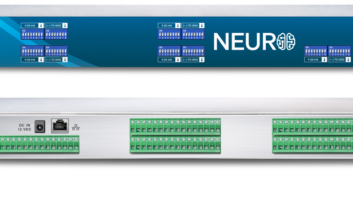Chalk up another victory for Pandora.com, the personalized Web music radio service that is cutting into commercial radio’s potential audience. In February, GM announced that 2012 Chevrolet Volt and Equinox models will have Pandora controls integrated directly into their 7-inch dashboard touchscreens.

To access Pandora, the MyLink “infotainment” system must connect with a Pandora-loaded smartphone. When a Chevy driver wants to listen to Pandora, she will access the service with a few screen touches, just as she can access AM/FM or CDs.
“This is strategically very important for Pandora,” says Jessica Steel, Pandora’s EVP of business and corporate development.
She reiterated the company’s recent themes: Nearly half of radio listening happens in the car; Pandora already has 80 million registered listeners; accessing Pandora on the road should be “as easy for them as tuning to FM radio.”
‘Mass market’ no more?
General Motors’ MyLink system is the company’s answer to Ford Sync. Both are voice-recognition control systems that integrate the multifarious devices turning up in today’s cars. These include onboard navigation and entertainment systems, plus MP3 players and smartphones brought in by drivers.
“The goal of GM and MyLink is to minimize driver distraction,” says Tony Kraatz, MyLink’s lead engineer. “We want people to keep their eyes on the road and their hands on the wheel. That is why we are using voice recognition to control in-car devices, whether for controlling radios, answering phones or navigating.” The MyLink voice recognition technology uses the Nuance operating system.
The reason GM decided to add Pandora is simple: Drivers are using it. This is why the automaker is also supporting the Pandora-like Stitcher Smart Radio in MyLink.
“These are mobile services that people are using in their vehicles, so we want to make them as safe to use as possible,” Kraatz says.
The challenge to traditional radio is explicit on Chevy’s website, which quotes a company VP of marketing saying, “There is a new generation of car buyers who don’t want to settle for mass-market radio. They want to create their own individual stations and have access to them wherever they are.”
Still smartphone-linked
MyLink makes Pandora appear to be a dashboard-accessed radio service. But despite appearances, accessing it is very much based on whatever smartphone the driver has along, and whether it is subscribed to Pandora. If the phone is not Bluetooth-capable, or accessing the wireless Web, or subscribed to Pandora — or some combination of these three — the service will not work on MyLink.
“It just doesn’t make sense to integrate mobile phone technology directly into any car’s onboard entertainment system,” says Kraatz. “Smartphones keep evolving, and we don’t want to commit ourselves to a technology that may become obsolete in a year or two.”
Pandora certainly agrees. “Connecting via smartphone is the technology that makes the most sense today, and will likely make the most sense for the foreseeable future,” says Steel. “Besides, being on smartphones, as opposed to in-car receivers, makes MyLink immediately relevant for our over 50 million smartphone listeners. We want to make Pandora available everywhere our listeners are, and we accomplish that really well by being on their mobile phones.”
Pandora’s prospects
GM’s MyLink is just the latest in-car success for Pandora.

“Mercedes has launched a dealer accessory product called Media Interface Plus that allows Pandora to be controlled on their COMAND in-car entertainment system,” Steel says.
“Additionally, Mini has launched Pandora on Mini Connected, where the Pandora interface is presented in the Mini infotainment display. In the future, you will also be able to access Pandora on the Toyota Entune entertainment system and on select Hyundai vehicles, again via a smartphone.”
Clearly, Pandora is succeeding making inroads into traditional radio’s automotive territory. As it does so, drivers increasingly will demonstrate whether or not they prefer a Web-based service that provides customized music at the expense of local news, weather and traffic.
For radio broadcasters, the results of these decisions will — at best — offer ideas for making radio better adapted to the 21st century. At worst, they may face the industry with a life-or-death competitive challenge, one not seen since broadcast television forced radio to radically change its content back in the 1950s.
National Association of Broadcasters Manager of Media Relations Zamir Ahmed isn’t ready to throw in the towel quite yet.
“Pandora offers a niche music source for listeners, but it can never replicate the lifeline free and local radio source enjoyed every week by more than 265 million listeners,” Ahmed says.
“Critics have written radio’s obituary for decades, but it is the ultimate survivor because it keeps audiences locally connected. Not only is radio an instrumental source of new music, it keeps listeners plugged into their community with news, sports, weather and traffic updates every day. And the beauty of radio is that it does all this for free.”
James Careless interviewed Pandora’s Tim Westergren in the April 6 issue.












